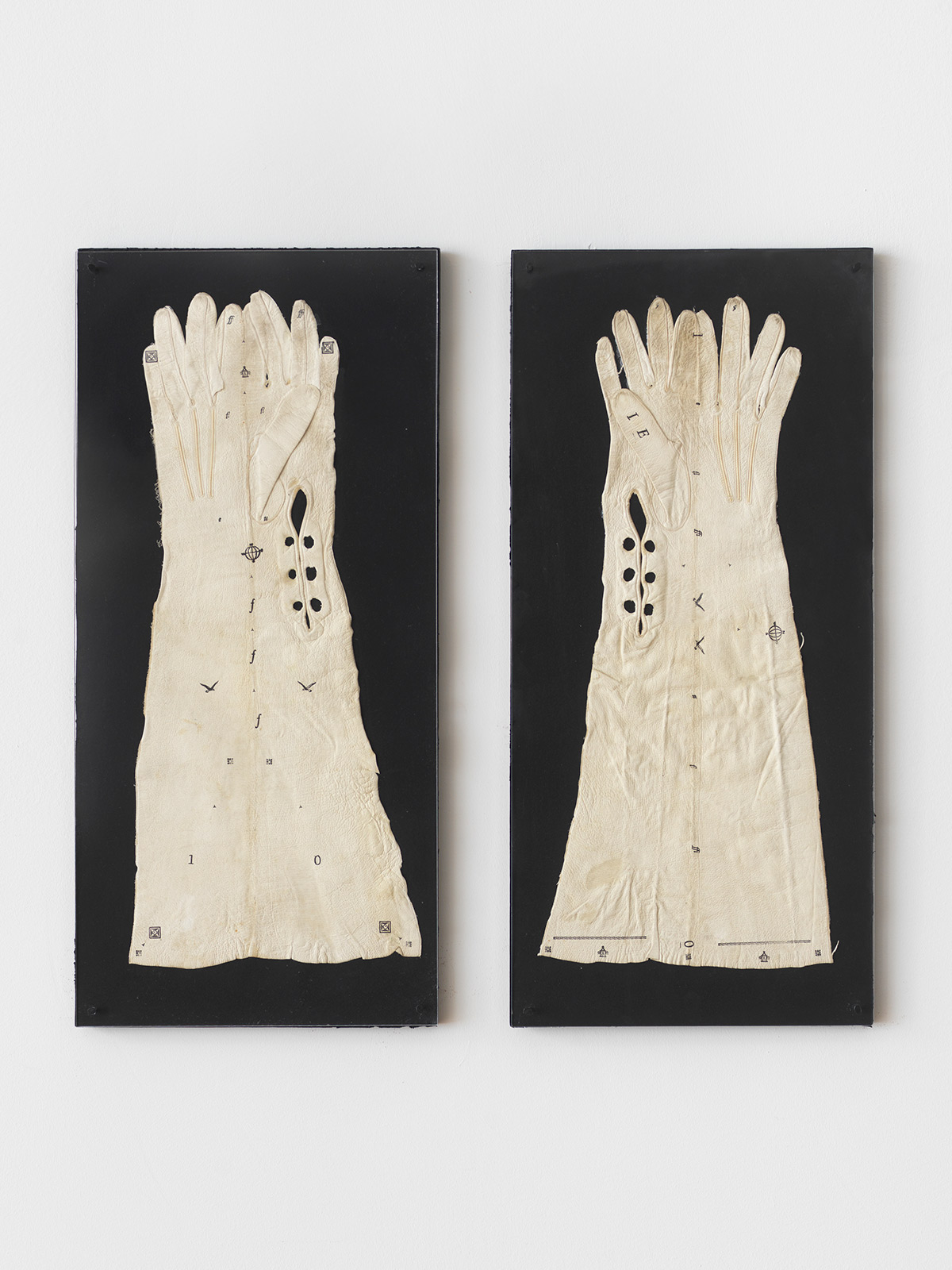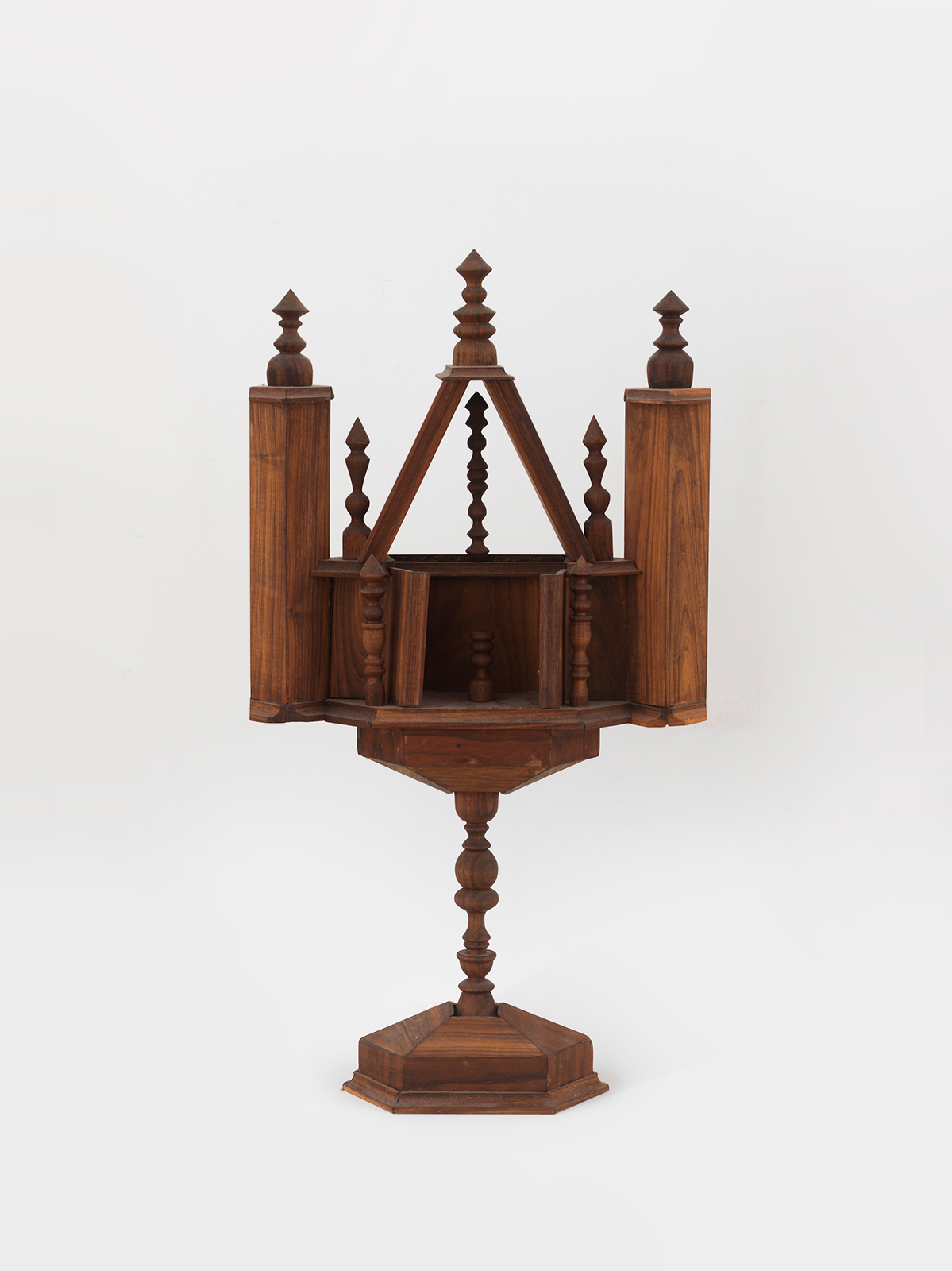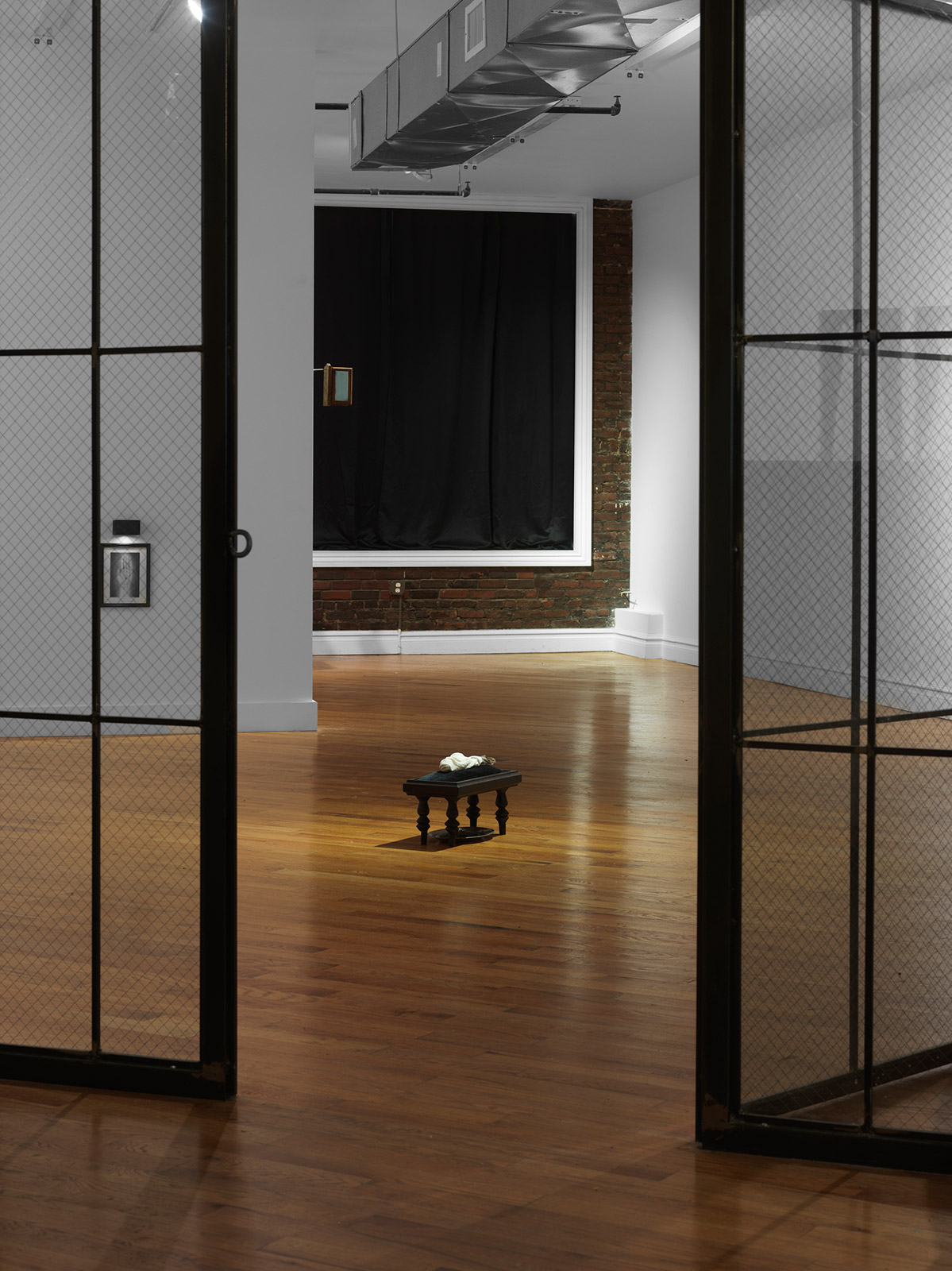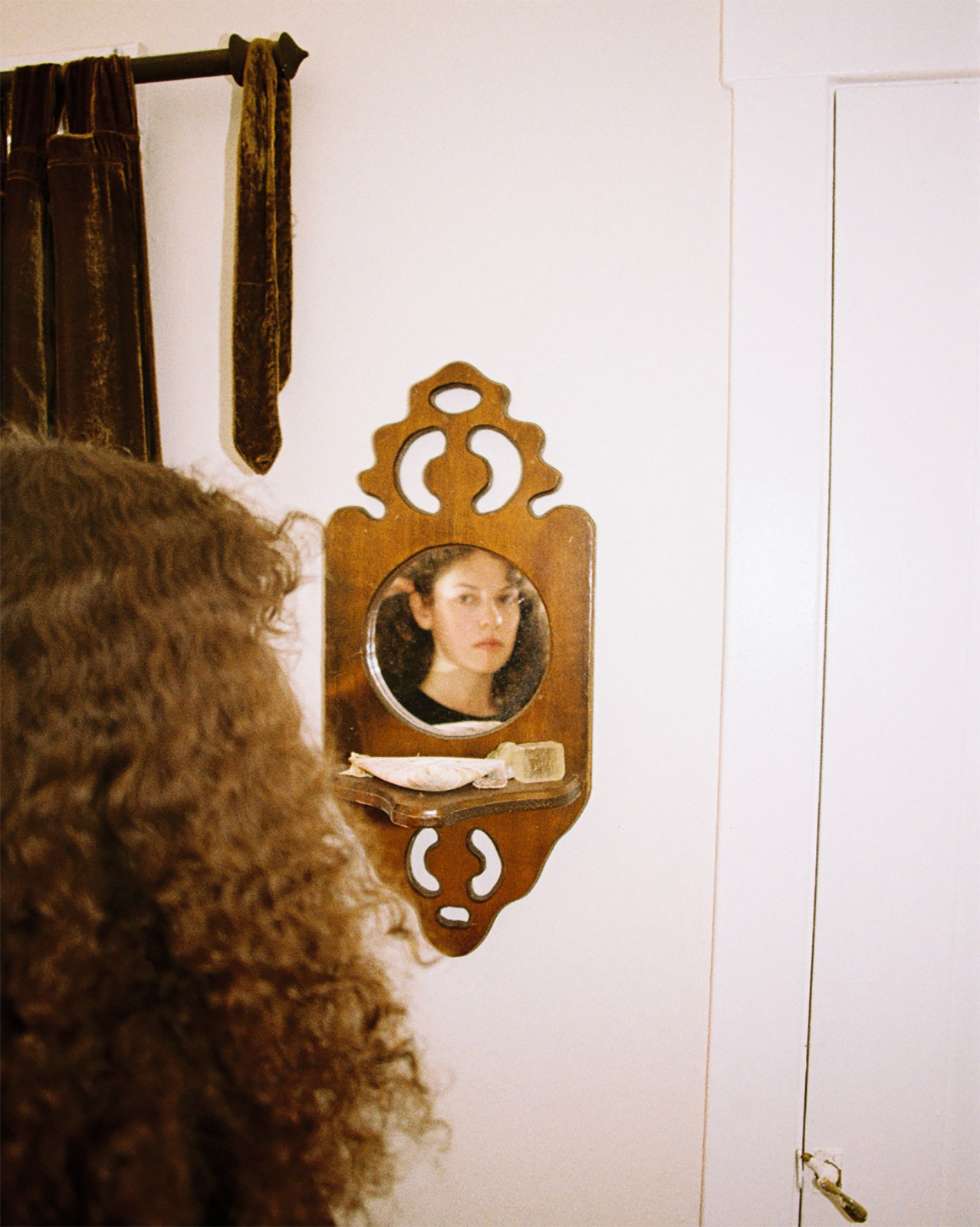Document sits down with the artist to talk about the natural disasters, divination, and doves behind her first solo show, on view at David Peter Francis gallery
For mixed media artist R. Jamin, art is science, catastrophe is comforting, and doves are God. In her debut solo exhibition Temperance at Chinatown’s David Peter Francis gallery, Jamin approaches these themes with a deft hand: her graphite drawings are reminiscent of early scientific diagrams; velvet and steel are sculptural stand ins for family heirlooms lost due to natural disaster; wooden reliquaries speak for her pet dove Valentine, who profoundly shapes her practice. The young artist cites pre-enlightenment thinking as key to her understanding of artmaking, where fact and belief converge in the realm of the sublime. For Jamin, all notions of meaning-making are better exercised in the poetics of artmaking than understood in the world of the rational.
Document sits down with Jamin to discuss the divine intonation of Temperance, and her own scientific method for making art.
Maya Kotomori: I want to start by asking about your relationship to sculpture. What are the origins of your practice?
R. Jamin: It’s such a classic thing to say that I’ve been doing it since I can remember. I’ve always wanted to do a lot of other things and it always led back to me making work. I wanted to be a scientist for a while, I was really into quantum physics. I went to a public arts high school where I was like, I’m going to do art for myself but because art wasn’t a sustainable career I’d do other things, but it would lead me to an idea where I was like, I need to make a film about this, or I need to draw something about this, or I need to make a sculpture that has to do with this concept.
How I got into sculpture… it was never a cognizant choice. Through apprenticeships with woodworking and metalworking, it fell into my lap. My mom is a seamstress so I learned to sew at a very young age. As soon as I got a new skill that I could utilize, I would think, ‘Okay, I am going to process my ideas through this avenue.’ Sculpture became a way for me to process information.
Maya: What does the scientific method mean to you? Would you consider it an artistic process?
R. Jamin: I think it can be an artistic process. It actually applies to everything because the scientific method is a process of creating a question and then finding different approaches to tackle that question and then prove yourself either wrong or right. Some of the science that I’m interested in is pre-scientific method, where research is more closely linked to theology. Science has an epistemology. Religion has an epistemology. I get really interested in pre-enlightenment science, where the divine is an equally watertight way to move forward with scientific questions, and where both the divine and the scientific are raised to the same level of scrupulousness. It becomes a scientific method practicing within an alchemical practice that becomes an internal experiment that is also an external one on matter, and internal one constructed on your soul.
That’s closer to my own practice with the physical things I’m making. I can be judgemental about them like, Does this object feel good, or is it good art, or not? I’ve been in art school for a long time and I feel like that’s a mental trap for me, and an easier, more productive way for me to think about it is, Is this a question that I need answered? Then I’ll attempt to answer the question, and even if the result is ‘unsuccessful’ or I don’t like it, the object becomes a collateral byproduct for whatever conceptual experiment I’m trying to conduct. It’s ultimately a hermetic, very private process.
Maya: It’s essentially practicing art within the idea that all scientific fact was once grounded in belief.
R.Jamin:Exactly, and that’s still the case. We’re operating under a wide net of beliefs that we have to anchor ourselves to terms that serve as axioms to understand the world. But obviously modern science is incredible and has given us so many things. I also think that there is something lost in it, which is this element of the unknown that is so important to art. Any great scientist will be a big proponent of the unknowable and have a sort of trust and belief in a mysterious order that is beyond their comprehension. And I think that anyone who denies that maybe is not paying close enough attention.
Maya: You mention these scientific questions that you use your art to answer for yourself, but in these very hermetic worlds that become external in objects. What questions do you think are being asked and answered in this exhibition?
R. Jamin:The first one that I got really interested in was an idea I was calling ‘the ultimate absolute minimum,’ or furthest point that something can reach before it ceases to exist. I developed this idea in tandem called the empirical absolute minimum, which was the place where the object seems, by all measurable standards, to cease existing, and then the ultimate absolute minimum is a more diving space where the object has ceased to empirically exist, but continues to exist into a hypothetical infinity. There’s this novel by an absurdist writer called Flann O’Brien called The Third Policeman, and there’s a character in it who makes all of these hypothetical objects that transverse this boundary that I’m talking about. One of them was a spear that was sharpened so precisely that where the point seemed to end was around a foot away from the actual point where it physically ended. So you could see the point end, but another character got stabbed in the hand from one foot away from where the point seemed to end and drew this tiny bit of blood. I recreated that spear for the show using that idea.
The way I approach these pieces in the show is with a lot of diagramming in the graphite drawings. To me these ideas are not best shown in a scientific way, because to me the best way to describe them is in a way that’s as ineffable as the concept itself. In my opinion, what good art does is surpass a conscious level of knowledge and inform your intuitive understanding. I feel so self righteous saying this, but the way I work is trying to engender a specific feeling for an audience where they’re able to walk a way with, a specific feeling that maybe the perimeters of the objects they just looked at, or the symbols they saw, get a little bit wider.
Maya: This opens up a new understanding for me with looking at your graphite drawings. You’re approaching atomic space within the material as well as fabricating it on a macro level. I’m interested in what role space plays in your work, material and ‘ineffable’ as you say?
R. Jamin:I feel like I work with material as a symbolic conduit. I’m someone where I need to contemplate the nature of wood, so that’s why I’m using lots of wood. It’s a material that contains a lot of symbolic weight. So in the same way of considering the smallest atomic weight of a material, I’m also considering the linguistic history of a material. I’ve become really fixated on walnut, but just because of the way it acts when you work it, but also because it has this divine air to it, like when you go into a place of worship and they have a lot of dark wood that feels aged and stoic.
With graphite, nothing has felt as pure and beautiful and simple as graphite. I like the accessibility of it, like how I can always afford one dollar’s worth of pencil lead. The mechanical pencil is an infinite loop of material, and each lead has different thicknesses and hardnesses. There’s a feeling of ease that I’m able to get with graphite as a material that paint has never given me. If I was maybe a bit more precise, I wouldn’t smudge as I go along. But I like the act of making a line and leaning into the fogginess of the graphite. It feels like an image emerges from it—I use powder graphite too, and it’s almost like an ash that the images from. The smokiness is like divination. I don’t want to sound too woo-woo…
Maya: I mean we’re both from SoCal, so that’s like, what we do! I wanted to pivot a bit and ask about catastrophe as a concept, specifically being from LA, earthquake capital of America.
R. Jamin: I’m from right on the San Andreas Fault, so I grew up in a way where catastrophe felt like a very understood part of life. I had a list in my head at all times of, like, exactly where I was in the world and a list of things I should do if there was an earthquake. I think every kid in California kind of learns that, but it was also drilled in my head by my family to know the protocol at all times. It became almost a fixation to go around the city and see a vision of what would happen if the big one happened right where I was. When I was a kid, we’d be on the highway and my dad would be like ‘If the big one happened right now, that thing would fall on us,’ and I’d be like, ‘Okay.’ It became more of a hypothetical game than something to be afraid of. Fire too, I grew up in an area that was continuously catching on fire and we would evacuate very frequently especially when the drought was in effect. My grandparents lived in a mobile home that caught on fire and burned down in a huge wildfire, and then it became something that we were dealing with very immediately because we lost a lot of heirlooms.
It feels like everything is precious and precarious. The mountains that I grew up near feel like reminders of catastrophe that had happened in the past but ended up, on a macro level, settling in a beautiful way. The practice of mythologizing catastrophe and viewing it in a grand scheme is comforting.
Maya: I see the gentleness and comfortability in the dove imagery throughout the show. Where does that come from?
R. Jamin: My dove, Valentine. I think she felt like a symbol. I would hate to reduce her to that, and there were so many other people in her life that really deeply cared for her. So, I came across this dove… I would look after a flight of doves and develop a relationship with them. But they were hit by a terrible plague—it was biblical. A lot of them died, except this one who just survived this illness, but she was left paralyzed and she couldn’t move. I remember, before this I was going back to Los Angeles from New York and on the plane, I thought to myself ‘I’m going to meet a dove and I’m going to name her Valentine.’ Because that’s a perfect name for a dove. Then I arrived and met this dove who survived the plague, and I was like, Oh, this is her.
I left Los Angeles again and became really preoccupied with improving her life, and I made her all of these different slings and devices to better take care of her that I was going to present when I went home for Thanksgiving. Then I got word that she died very suddenly, but also in a saintly way. I made a reliquary that I still have in my house where I kept some of her feathers. At the time when she died, she almost became a symbol of a crisis of faith, where there was this perfect being—all a dove wants to do is fly—can’t. It’s the most heartbreaking thing. After Valentine, the dove became a fixation for me as a symbol of catastrophic sadness. Especially being away from home and living in New York I found that the best way for me to feel connected to these animals is to make work about them and for them.
Maya: May she rest in peace. Her story is really about precarity too, as a bird.
R. Jamin: Yes, exactly. It sounds so melodramatic to say, but I feel like the worst possible thing that could happen to you, if you’re a dove, is to lose all your flight abilities. That became a conceptual preoccupation of mine, and I think living somewhere that’s so precarious makes everything become so special, like doves, like… palm trees. I used to not like palm trees growing up, but they feel like such a feat of natural engineering. Everything in California feels so delicate. And I think these themes come up in my work.
Apocalypse is not something that happens once. It’s something that happens on a smaller and smaller scale but in grander and grander schemes, speaking over and over again for millennia. And that becomes comforting.




















